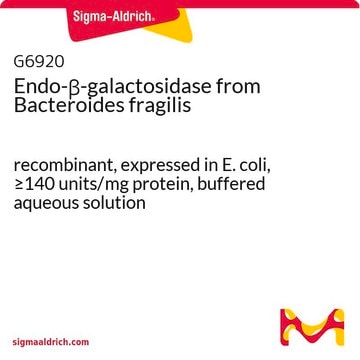C8058
Chondroitinase B from Flavobacterium heparinum
lyophilized powder (with BSA as stabilizer)
Synonym(s):
Chondroitin sulfate B lyase
About This Item
Recommended Products
biological source
bacterial (Flavobacterium heparinum)
Quality Level
conjugate
(Glucosaminoglycan)
form
lyophilized powder (with BSA as stabilizer)
shipped in
dry ice
storage temp.
−20°C
Related Categories
Application
Biochem/physiol Actions
Unit Definition
Signal Word
Warning
Hazard Statements
Precautionary Statements
Hazard Classifications
Eye Irrit. 2
Storage Class Code
13 - Non Combustible Solids
WGK
WGK 3
Flash Point(F)
Not applicable
Flash Point(C)
Not applicable
Personal Protective Equipment
Certificates of Analysis (COA)
Search for Certificates of Analysis (COA) by entering the products Lot/Batch Number. Lot and Batch Numbers can be found on a product’s label following the words ‘Lot’ or ‘Batch’.
Already Own This Product?
Find documentation for the products that you have recently purchased in the Document Library.
Customers Also Viewed
Articles
Uncover more about glycosaminoglycans and proteoglycans including the structure of glycosaminoglycans (GAGs), the different types of GAGs, and their functions.
Glycosaminoglycans are large linear polysaccharides constructed of repeating disaccharide units.
Our team of scientists has experience in all areas of research including Life Science, Material Science, Chemical Synthesis, Chromatography, Analytical and many others.
Contact Technical Service





